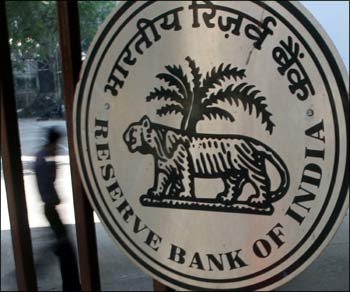Moody's on Monday upgraded India's local currency sovereign rating by a notch on the country's efforts toward fiscal reforms and the economy's capacity to face a crisis, a move that that will result in greater capital inflows and appreciation of rupee value.
Though the global rating agency has upgraded the local currency government bond grading from Ba2 to Ba1, it is still a notch below investment grade.
Moody's has a positive outlook on the rating, which means there might be a further upgrade later.
Meanwhile, Moody's retained India's foreign currency rating at Baa3 (the lowest investment grade) with a stable outlook, thus narrowing the gap between the local and foreign currency ratings to one notch.
Moody's said the government's ongoing policy reforms, divestments, fuel subsidy reforms, along with impending tax reforms will support its fiscal and debt position, and may even outperform the government debt targets.
After India's fiscal deficit targets went awry due to the stimulus packages offered by the government to blunt the impact of the global financial crisis, many ratings agency had warned of sovereign ratings cuts.
The Centre's fiscal deficit had more than doubled to over 6 per cent during 2008-09, though a central law mandates a 3 per cent deficit. Its fiscal deficit again widened to over 6.5 per cent during 2009-10.
However, a partial rollback of the stimulus enabled the government to estimate fiscal deficit at a lower 5.5 per cent this fiscal.
Citing other reasons for the upgrade, Moody's said the economy showed resilience during the global recession and the government did not heavily resorted to non-market measures for funding stimulus, which could have carried credibility costs.
The ratings gap in favour of the Indian government's foreign currency obligations signifies a potential likelihood that India could prioritize its external obligations over its domestic obligations, the agency said.
. . .
Moody's ups India's rupee rating; here's why
The main reasons for the local currency ratings upgrade are:
1. A broad range of institutional and structural reforms whose deepening, over time, will result in gradual improvements in the government's financial strength, support fiscal credibility, and improve economic resiliency;
2. The absence of any heightened recourse to non-market measures for financing the government's large stimulus program, which could otherwise have carried credibility costs;
3. The Indian economy's resilience throughout the global recession; and
4. The weakening of the structural and policy reasons that could still allow the government to prioritize its external obligations over its domestic obligations India's short-term issuer rating of NP was not affected by this rating action.
"The upgrade of the local currency sovereign rating to Ba1 was prompted by the Indian government's adoption of a medium-term (2010-2015) fiscal consolidation strategy, which is supported by a broadening structural reform programme," said Aninda Mitra, a Moody's vice president and the company's lead sovereign analyst for India.
"Ongoing policy normalisation, divestments, fuel subsidy reforms, along with impending tax reforms will support the government's fiscal and debt position and are in line with, and may even outperform, the government debt targets envisaged in the 'revised roadmap for fiscal consolidation' -- as laid out by the country's Thirteenth Finance Commission," said Mitra.
"The sovereign ratings also reflect the ability of policymakers to temporarily mount sizable counter-cyclical policies without weakening institutional credibility or damaging local investors' faith in the government," said Mitra, adding, "recent reforms follow closely on the heels of the demonstrated resilience of the Indian economy which had performed better than most emerging markets without any worsening of external or government debt metrics."
"The absence of non-market or repressive measures to raise domestic financing for a substantial government borrowing program -- in a very stressful local and global environment -- also influenced our decision to upgrade India's local currency rating," said the analyst.
YES Bank chief economist Shubhada Rao said the upgrade will help greater capital inflows into the country and will have a positive impact on the pricing of overseas funds, besides marginally backing rupee's appreciation against dollar.
. . .
Moody's ups India's rupee rating; here's why
"Any improvement or upgrade augurs well in terms of global investment appetite. Going forward it will boost the capital inflow when risk appetite returns in the global market," Rao said.
The positive outlook on the Ba1 local currency sovereign rating encapsulates the expectation that reasonable policy management and a deepening of reforms will contain inflationary pressures, and reduce the risk of any renewed fiscal slippage. It also reflects the political scope and the policy commitment for implementing reforms until the end of the current government's term in office in 2014.
These are expected to contain the risk of heightened structural fiscal pressures from a broadening of social welfare programmes.
What could eliminate the ratings gap
Moody's ratings gap in favour of the Indian government's foreign currency obligations signifies a potential likelihood that the government of India could prioritise its external obligations over its domestic obligations.
The former are easily repayable and owed predominantly to official creditors; and the latter are onerous and owed largely to a statutorily pliable domestic creditor base.
However, even amidst a trying global and local environment, Indian authorities have remained on the course of implementing incremental institutional and regulatory reforms that are deepening and liberalising domestic capital markets.
And, improving government finances will also gradually ease the need for onshore controls, and risk socialisation.
In this context, Moody's will consider unifying India's local and foreign currency ratings at Baa3 should the track record of fiscal reforms deepen, and if --currently higher than usual- inflation pressures normalize. These developments would underpin the government's structural reform program and improve its local currency creditworthiness.
Currently, the Indian government's foreign currency bond rating of Baa3 and its stable outlook is well positioned given the country's reasonably healthy external fundamentals, and macroeconomic prospects.
Moody's last rating action on India was taken on December 15, 2009, at which time it changed the outlook for the Ba2 local currency sovereign ratings to positive from stable.




article